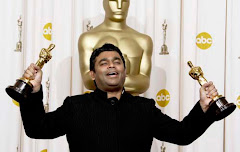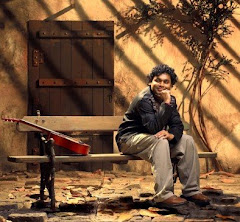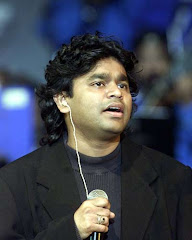
Desaraju Surya
Hyderabad: The trend of film star jumping into politics in Andhra Pradesh has not started with the legendary N T Rama Rao. Much before Rama Rao launched the Telugu Desam Party in 1982, his contemporary and childhood classmate Kongara Jaggaiah had already served as a member of Lok Sabha from Ongole. N T Rama Rao, however, was the real trend-setter. With his advent into politics, many movie artists, directors and producers too started taking the political plunge.Hero Krishna was elected to the Lok Sabha once on a Congress ticket but he subsequently did not stay active in politics. Another hero Krishnam Raju first joined the Congress and later shifted to the BJP and was elected twice to the Lok Sabha. He served as a minister of state under Atal Bihari Vajpayee. Just two days ago, he quit the BJP and joined the Praja Rajyam Party floated by Telugu Megastar Chiranjeevi.In fact, Chiranjeevi was the only hero with a massive fan following to launch a political party after NTR.Heroine and national award winner ‘Urvasi’ Sarada was elected to the Lok Sabha on behalf of the TDP. Very recently she quit the party and joined the Congress.Noted director Dasari Narayana Rao was elected to Rajya Sabha twice on Congress ticket and till recently served as a minister of state in the Manmohan Singh Cabinet. Another director K Raghavendra Rao is an active member of the TDP but he always remains behind the scenes. Likewise, actor and producer M Murali Mohan too remains behind the scenes in the TDP and has never contested an election. His contemporary and another actor-producer M Mohan Babu was elected to Rajya Sabha during NTR’s time but subsequently fell apart with Chandrababu Naidu and distanced himself from active politics. Now, he is virtually supporting the Chief Minister Y S Rajasekhara Reddy.Character actor Kaikala Satyanarayana too was elected to Lok Sabha on behalf of the TDP but he has now quit the party. Another character actor late Ravu Gopala Rao too was active in the TDP given his association with NTR.NTR’s son Nandamuri Balakrishna, one of the top heroes in Telugu, used to campaign for the TDP during his father’s time but stayed away from politics for over a decade when his brother-in-law Chandrababu Naidu was at the helm of affairs. Only in late 2008 did Balakrishna start taking a serious role in TDP affairs what with Chiranjeevi launching his own party. Balakrishna, along with his nephew and upcoming film star NTR (Junior), is one of the star campaigners for the TDP in this election.Chiranjeevi apart, the Praja Rajyam Party is star-studded with his actor brothers Nagendra Babu and Pavan Kalyan being key leaders in the eight-month-old party. Chiranjeevi’s brother-in-law is a noted film producer and is the key man who runs the PRP affairs.A couple of heroes like Rajendra Prasad and Suman too actively campaigned for the TDP.
Character actors Kota Srinivasa Rao and Babu Mohan were elected to the state Assembly on BJP and TDP tickets respectively and the latter even served as a minister in Chandrababu’s Cabinet. They are still active in politics.Heroine-turned-character actor Jayasudha joined the Congress a few months ago and is now contesting the Assembly election for the first time from Secunderabad.Hero-heroine couple Rajasekhar-Jeevitha too has joined the Congress but is not in the fray.Many character artistes and producers used to sail with the TDP during and after NTR’s time but have virtually become inactive now.Yesteryear heroes Bhanuchander and Sudhakar joined the Congress couple of days ago but they will have little role to play.Every time during elections, some film stars, directors and producers join one party or the other with the hope of grabbing a ticket but many simple fizzle out.
Hyderabad: The trend of film star jumping into politics in Andhra Pradesh has not started with the legendary N T Rama Rao. Much before Rama Rao launched the Telugu Desam Party in 1982, his contemporary and childhood classmate Kongara Jaggaiah had already served as a member of Lok Sabha from Ongole. N T Rama Rao, however, was the real trend-setter. With his advent into politics, many movie artists, directors and producers too started taking the political plunge.Hero Krishna was elected to the Lok Sabha once on a Congress ticket but he subsequently did not stay active in politics. Another hero Krishnam Raju first joined the Congress and later shifted to the BJP and was elected twice to the Lok Sabha. He served as a minister of state under Atal Bihari Vajpayee. Just two days ago, he quit the BJP and joined the Praja Rajyam Party floated by Telugu Megastar Chiranjeevi.In fact, Chiranjeevi was the only hero with a massive fan following to launch a political party after NTR.Heroine and national award winner ‘Urvasi’ Sarada was elected to the Lok Sabha on behalf of the TDP. Very recently she quit the party and joined the Congress.Noted director Dasari Narayana Rao was elected to Rajya Sabha twice on Congress ticket and till recently served as a minister of state in the Manmohan Singh Cabinet. Another director K Raghavendra Rao is an active member of the TDP but he always remains behind the scenes. Likewise, actor and producer M Murali Mohan too remains behind the scenes in the TDP and has never contested an election. His contemporary and another actor-producer M Mohan Babu was elected to Rajya Sabha during NTR’s time but subsequently fell apart with Chandrababu Naidu and distanced himself from active politics. Now, he is virtually supporting the Chief Minister Y S Rajasekhara Reddy.Character actor Kaikala Satyanarayana too was elected to Lok Sabha on behalf of the TDP but he has now quit the party. Another character actor late Ravu Gopala Rao too was active in the TDP given his association with NTR.NTR’s son Nandamuri Balakrishna, one of the top heroes in Telugu, used to campaign for the TDP during his father’s time but stayed away from politics for over a decade when his brother-in-law Chandrababu Naidu was at the helm of affairs. Only in late 2008 did Balakrishna start taking a serious role in TDP affairs what with Chiranjeevi launching his own party. Balakrishna, along with his nephew and upcoming film star NTR (Junior), is one of the star campaigners for the TDP in this election.Chiranjeevi apart, the Praja Rajyam Party is star-studded with his actor brothers Nagendra Babu and Pavan Kalyan being key leaders in the eight-month-old party. Chiranjeevi’s brother-in-law is a noted film producer and is the key man who runs the PRP affairs.A couple of heroes like Rajendra Prasad and Suman too actively campaigned for the TDP.
Character actors Kota Srinivasa Rao and Babu Mohan were elected to the state Assembly on BJP and TDP tickets respectively and the latter even served as a minister in Chandrababu’s Cabinet. They are still active in politics.Heroine-turned-character actor Jayasudha joined the Congress a few months ago and is now contesting the Assembly election for the first time from Secunderabad.Hero-heroine couple Rajasekhar-Jeevitha too has joined the Congress but is not in the fray.Many character artistes and producers used to sail with the TDP during and after NTR’s time but have virtually become inactive now.Yesteryear heroes Bhanuchander and Sudhakar joined the Congress couple of days ago but they will have little role to play.Every time during elections, some film stars, directors and producers join one party or the other with the hope of grabbing a ticket but many simple fizzle out.






